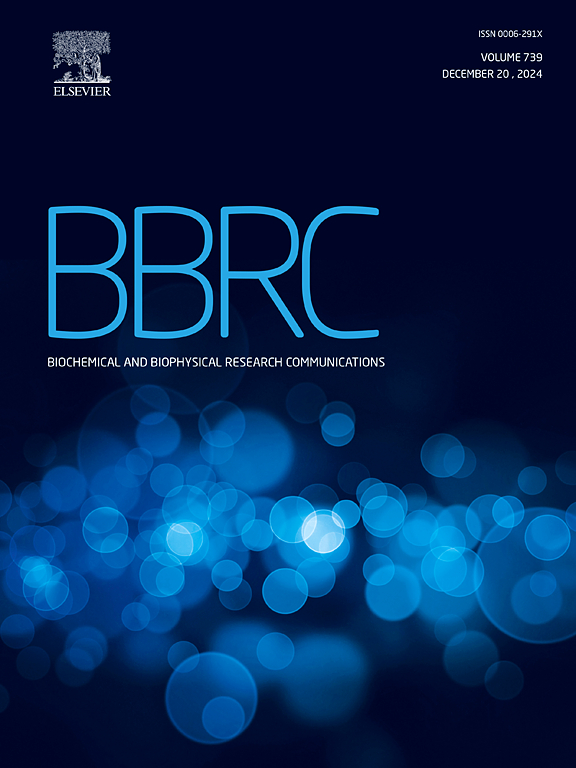Quantitative readout of methionine residue solvent accessibility in E. coli cells using radiolytic hydroxyl radical labeling and mass spectrometry
IF 2.5
3区 生物学
Q3 BIOCHEMISTRY & MOLECULAR BIOLOGY
Biochemical and biophysical research communications
Pub Date : 2025-04-01
DOI:10.1016/j.bbrc.2025.151745
引用次数: 0
Abstract
Reactive oxygen species play a crucial role in cellular processes, but their effects on protein structure and function in vivo remain challenging to study. Here, we present an approach using synchrotron-based X-ray footprinting methods to probe protein structure, via quantitative LC-coupled mass spectrometry of methionine oxidation (MSOx) in live E. coli. A label-free proteomic analysis identified 2104 proteins from E. coli, with 465 proteins exhibiting MSOx modifications distributed across multiple cellular compartments. Changes in MSOx modification with increasing X-ray dose revealed a correlation between rates of modification and solvent-accessible surface area in vivo for selected proteins responsive to exposure, providing a direct probe of protein structure and its conformational plasticity in the cell. The approach developed here offers a unique in-cell quantitative readout of methionine oxidation and solvent accessibility through radiolytic hydroxyl radical labeling. With this method, the landscape of methionine oxidation in E. coli can be mapped, providing insights into protein behavior under oxidative stress. It represents a first step in developing radiolysis and E. coli as platforms for in vivo protein structure assessment. The potential applications in drug discovery, protein engineering, and systems biology of protein conformations are considerable.
利用放射性羟基自由基标记和质谱法定量测定大肠杆菌细胞中蛋氨酸残渣的溶剂可及性
活性氧在细胞过程中起着至关重要的作用,但它们对体内蛋白质结构和功能的影响仍然具有挑战性。在这里,我们提出了一种利用同步加速器x射线足迹法探测蛋白质结构的方法,通过定量lc耦合质谱法检测活大肠杆菌中的甲硫氨酸氧化(MSOx)。一项无标记蛋白质组学分析从大肠杆菌中鉴定出2104种蛋白质,其中465种蛋白质在多个细胞区室中表现出MSOx修饰。随着x射线剂量的增加,MSOx修饰的变化揭示了对暴露有反应的特定蛋白质的修饰速率与体内溶剂可及表面积之间的相关性,从而提供了对细胞中蛋白质结构及其构象可塑性的直接探测。这里开发的方法提供了一个独特的细胞内蛋氨酸氧化和溶剂可及性的定量读数,通过辐射分解羟基自由基标记。通过这种方法,可以绘制大肠杆菌中蛋氨酸氧化的景观,从而深入了解氧化应激下的蛋白质行为。它代表了将辐射分解和大肠杆菌作为体内蛋白质结构评估平台的第一步。蛋白质构象在药物发现、蛋白质工程和系统生物学中的潜在应用是相当可观的。
本文章由计算机程序翻译,如有差异,请以英文原文为准。
求助全文
约1分钟内获得全文
求助全文
来源期刊
CiteScore
6.10
自引率
0.00%
发文量
1400
审稿时长
14 days
期刊介绍:
Biochemical and Biophysical Research Communications is the premier international journal devoted to the very rapid dissemination of timely and significant experimental results in diverse fields of biological research. The development of the "Breakthroughs and Views" section brings the minireview format to the journal, and issues often contain collections of special interest manuscripts. BBRC is published weekly (52 issues/year).Research Areas now include: Biochemistry; biophysics; cell biology; developmental biology; immunology
; molecular biology; neurobiology; plant biology and proteomics

 求助内容:
求助内容: 应助结果提醒方式:
应助结果提醒方式:


